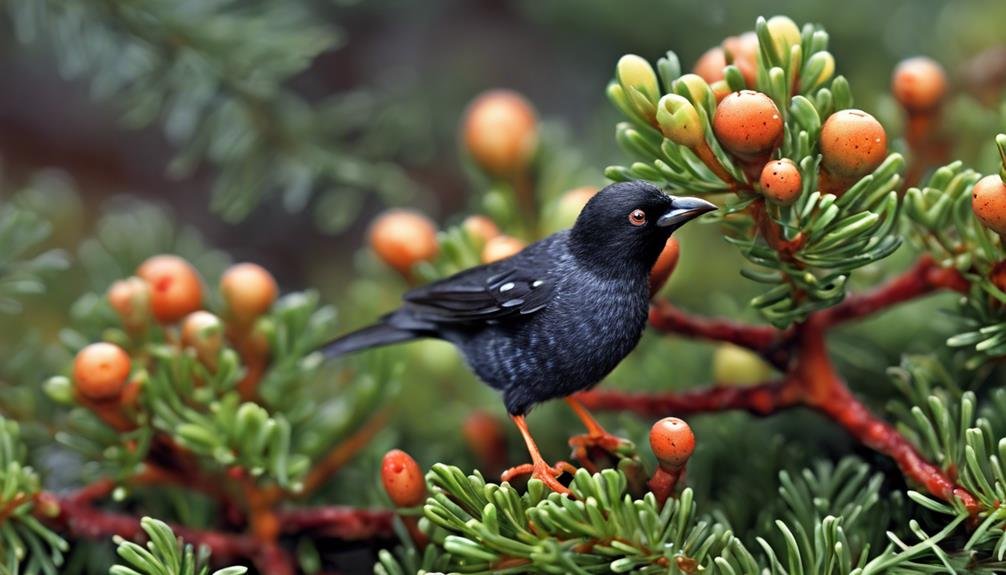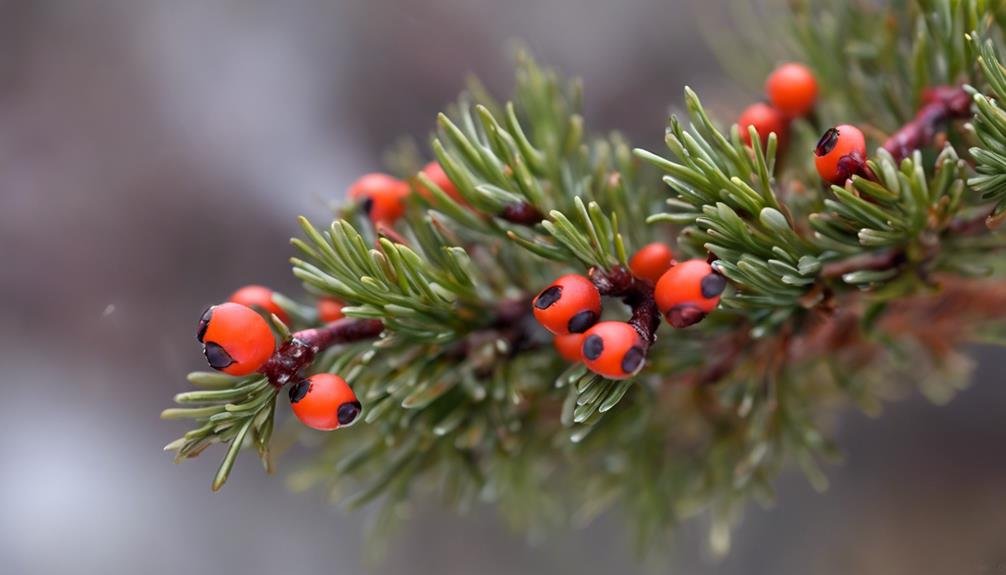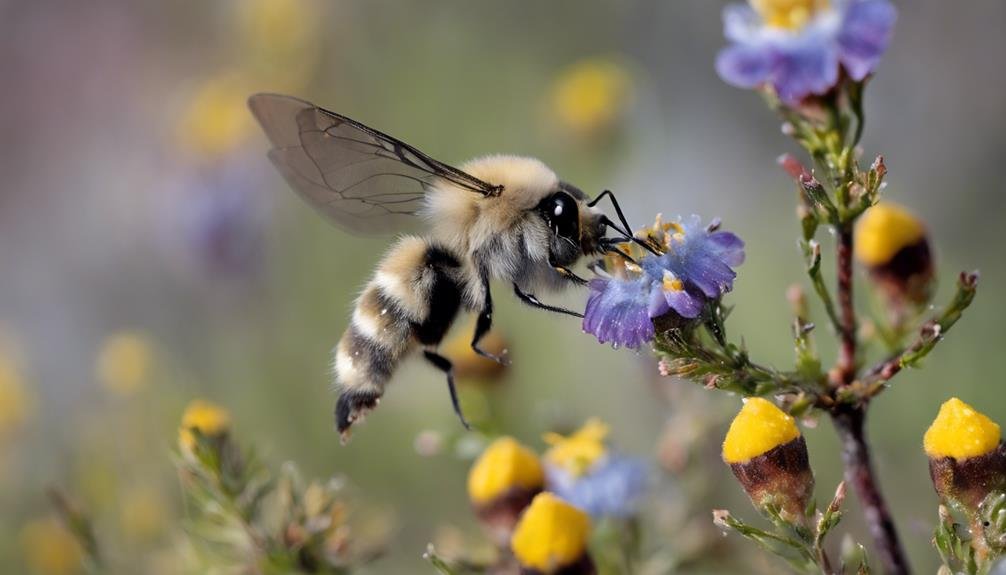What is the crowberry and why does it matter?
Crowberry, or Empetrum nigrum, is a resilient plant that flourishes in some of the most challenging environments on Earth. Its ability to thrive in such conditions speaks volumes about its significance to both its natural habitat and human societies.
Empetrum nigrum, commonly known as the crowberry, is a testament to nature’s adaptability. This low-growing evergreen shrub is distinguished by its red to brown stems and small leaves arranged alternately. It plays a pivotal role in its ecosystem, blooming between May and June to produce black or purplish-black drupes. These berries are not only a vital food source for indigenous communities but also serve as a natural dye, thanks to their high anthocyanin content.
The existence of the crowberry, however, is under threat from various factors, highlighting the need to understand its vulnerabilities and develop effective conservation strategies. This introduction serves as a high-level overview of the crowberry’s ecological importance and the challenges it faces.
Key Takeaways
The crowberry, Empetrum nigrum, is notable for its adaptability and importance in Arctic regions. Its ability to persist in harsh climates contributes significantly to local biodiversity.
The species faces threats from climate change and human activities, highlighting the need for its protection. Crowberries are integral to indigenous cultures, both as food and for their anthocyanin content, which has uses in natural dyeing.
Protecting Empetrum nigrum is essential for maintaining Arctic ecosystem health and cultural heritage.
Crowberry Overview
The Crowberry: An Ecological Marvel
Empetrum nigrum, commonly known as the crowberry, is a remarkable evergreen shrub that marks its presence with linear to elliptic leaves and distinctive young red stems. This plant isn’t just a feast for the eyes but also plays a pivotal role in the ecosystems it inhabits and in human culinary traditions. Native to the Falkland Islands, the crowberry has spread its roots far and wide, showcasing a near circumboreal distribution that speaks volumes about its resilience and ecological importance.
—
A Fruitful Bounty
The crowberry comes alive with blooms from May to June, setting the stage for the production of small, edible black or purplish-black drupe fruits. These berries are more than just a treat for the eyes; they’re a crucial food source for the local fauna and play an integral role in human diets. From the preparation of liqueur, wine, juice, and jelly to serving as a nutritional supplement, the crowberry’s fruits are versatile in their use, enriching our culinary experiences.
—
A Haven for Wildlife
Beyond its nourishing fruits, the crowberry serves as a vital habitat and food source for moth species, including Glacies coracina. This interaction is a classic example of the intricate relationships within ecosystems, where the crowberry provides for these moths, which in turn, play their own roles in the environment. Moreover, the berries find their way across landscapes, dispersed by migratory birds, illustrating a beautiful symbiosis between plant and avian life. This dispersal mechanism not only aids in the crowberry’s propagation but also in the distribution of food sources for birds across vast distances.
—
Conclusion
The Empetrum nigrum stands as a testament to the beauty and complexity of nature. Its ability to thrive in diverse terrains, support various species, and enrich human diets underscores its invaluable contribution to both natural ecosystems and human culture. As a native plant within its range, the crowberry exemplifies the interconnectedness of life and the importance of preserving such native species for the health of our planet’s ecosystems.
Evergreen Shrub Characteristics

Empetrum Nigrum: A Low-Growing Wonder
Empetrum nigrum stands out in the plant world due to its unique form as a low-growing evergreen shrub. Its leaves, which range from linear to elliptic shapes, alongside a grooved lower surface, make it easily identifiable. This plant adopts a creeping habit, allowing it to cover ground efficiently and contribute significantly to its ecosystem. Its aesthetic appeal is marked by its dark foliage, adding a layer of beauty to its surroundings.
Root System and Habitat Adaptability
The development of a shallow root system is a key feature of Empetrum nigrum, enabling it to spread across diverse landscapes with ease. This adaptation allows it to thrive in a variety of habitats, from sea-level environments to the challenging conditions of alpine zones. Its ecological versatility is a testament to its ability to adapt and flourish in varying conditions.
Reproduction and Ecological Role
The reproduction process of Empetrum nigrum involves seed dispersal by birds and animals, a mechanism that facilitates its wide circumboreal distribution. This aspect of its biology highlights the plant’s resilience and adaptability in spreading its genetic material across vast geographical areas. The edible fruit it produces adds another layer to its ecological and ornamental significance, offering sustenance to various species.
Challenges to Survival
Despite its robust nature, Empetrum nigrum faces challenges in its early stages of growth, particularly its reliance on a strong primary root. Additionally, its small stems render it susceptible to fire top-kill, a factor that poses a risk to its survival. This vulnerability underscores the delicate balance the plant must maintain amidst growth, reproduction, and environmental adversities.
Global Arctic Presence

Arctic Adaptation and Distribution of Crowberry
The Arctic regions, known for their harsh climates, are home to the resilient Crowberry plant. This species exhibits an extraordinary ability to thrive in acidic soils within shady, moist environments, showcasing its adaptability. Its presence in the Northern Hemisphere, spanning areas from Scandinavia to the Falkland Islands, highlights a successful evolutionary journey. The role of migratory birds in this dispersion can’t be overstated; they carry Crowberry seeds across continents, aiding in its widespread Arctic establishment.
Crowberry and Indigenous Cultures
In the Arctic, the Crowberry transcends its role as a mere plant. It becomes a foundational element in the diets of indigenous communities like the Inuit and the Sami. For generations, these groups have harvested the berry, integrating it into their meals due to its nutritional benefits and accessibility. This practice underscores the deep-seated relationship between the Crowberry and the cultural heritage of Arctic peoples, illustrating how traditional ways of life are intertwined with the natural world.
Pollination Strategy

Delving into the Arctic Ecosystem, we uncover the crowberry’s remarkable adaptation to its harsh surroundings through its pollination strategy. This strategy is pivotal for its survival and propagation, showcasing the plant’s resilience and ingenuity.
The Primacy of Self-Pollination
At the heart of the crowberry’s reproductive strategy is its reliance on self-pollination. This method is a masterstroke of evolution, enabling the plant to thrive in environments where traditional pollinators are rare. The crowberry has fine-tuned its flowers to ensure that its own pollen reaches the stigma, securing fertilization and subsequent fruit production without external assistance.
Innovative Floral Design
The architecture of the crowberry’s flowers is nothing short of ingenious. With pink to purple sepals that could potentially entice bees and flies, the plant’s true genius lies in using these structures to support self-pollination. This floral design ensures that the crowberry doesn’t depend heavily on the whims of pollinator availability, an unpredictable factor in the Arctic.
Apomixis: A Reproductive Shortcut
Crowberries possess an extraordinary ability known as apomixis, which allows them to reproduce without pollination. This form of asexual reproduction is a fail-safe, ensuring the production of genetically identical offspring. In the unpredictable Arctic environment, apomixis provides a consistent and reliable means for crowberries to sustain their population.
The Minimal Impact of Wind and Insects
While wind and insects might play a role in the pollination of many plants, their contribution to the crowberry’s reproductive success is notably minor. The plant’s specialized adaptations for self-pollination and apomixis significantly reduce its reliance on these external factors. This independence is a testament to the crowberry’s evolution in response to its Arctic habitat.
Vulnerability Factors

Challenges Facing Black Crowberry in the Arctic Environment
Despite its capacity to endure the extreme conditions of the Arctic, black crowberry is confronted with significant challenges that threaten its survival. One of the most pressing issues is its high susceptibility to fire damage. Due to its low growth form and delicate small stems, it’s highly prone to being destroyed by fire. This vulnerability is exacerbated in older plants, which have a shallow root system, making them even more susceptible to the detrimental effects of fire.
Post-Fire Regeneration: A Slow Process
After a fire, the recovery of black crowberry is an incredibly slow process, primarily occurring through vegetative regeneration. Astonishingly, it can take anywhere from 20 to 30 years for the plant to return to its prefire densities. This prolonged recovery period raises concerns regarding the plant’s ability to adapt and survive in the face of environmental changes.
Impact of Environmental Disturbances
While clearcutting and burning pose significant threats to the recovery of black crowberry, it has demonstrated some capacity to recolonize certain disturbed sites naturally. However, its success in reestablishing itself varies significantly, underscoring the complex relationship between the plant’s vulnerabilities and its resilience to environmental disturbances.
This intricate balance of resilience and vulnerability underlines the need for a nuanced understanding of black crowberry’s ecological role and the factors that threaten its survival in the Arctic environment.
Frequently Asked Questions
Are Black Crowberries Edible?
Q: Can you eat Black Crowberries?
A: Yes, Black Crowberries are indeed edible. They are known for their distinctive flavor and nutritional benefits. Various methods can be used to preserve them, allowing for their incorporation into a wide range of dishes outside their natural harvesting season.
What Is Empetrum Nigrum Used For?
Q: What is the purpose of Empetrum nigrum?
A: Empetrum nigrum is used for a variety of purposes such as providing sustenance for wildlife, contributing to habitat conservation, and holding cultural significance. It plays a crucial role in traditional medicine and is valued for its nutritional benefits in indigenous diets, in addition to its ecological contribution to supporting biodiversity.
What Are Crowberries Good For?
Q: What benefits do crowberries offer?
A: Crowberries are not only a key ingredient in adding a distinct taste to traditional recipes but also play a significant role in the diet of various wildlife. They are packed with nutritional value, notably high in anthocyanins, which are known for their health benefits. This makes crowberries a versatile choice for both culinary and medicinal uses, including the preparation of unique crowberry cocktails.
What Are the Benefits of Crowberry on Skin?
Q: How does crowberry benefit the skin?
A: Crowberry offers several advantages for skin health. Its antioxidant properties protect the skin from UV radiation, aiding in the prevention of sun damage. It also has the ability to retain moisture, which helps in avoiding skin dryness. Additionally, crowberry has anti-aging effects that contribute to the reduction of wrinkles, promoting a more youthful and resilient complexion.
Which Has More Nutritional Benefits: Crowberry or Cloudberry?
Both crowberries and cloudberries offer unique nutritional benefits. Crowberries are rich in antioxidants, especially anthocyanins. However, cloudberries stand out with their high vitamin C content, omega fatty acids, and fibers. Among cloudberry plant benefits are improved heart health and enhanced immune system functions due to its rich nutrient profile.
Do Crowberries and Sedges Share Similar Habitats in the Wild?
Crowberries and sedges often thrive in similar cold, nutrient-poor environments like tundras or alpine regions. Both plants are well-suited to these harsh conditions, creating a unique ecosystem. Understanding sedges carex is essential to grasp how these resilient plants adapt to moisture-rich and often challenging habitats alongside crowberries.
Conclusion
The crowberry, Empetrum nigrum, stands out for its resilience and significance in the Arctic regions. Its evergreen nature and distinctive pollination strategy allow it to thrive in extreme conditions, thus supporting biodiversity.
Despite its robustness, the crowberry isn’t immune to the challenges posed by climate change and human interference. Its importance extends beyond ecology to culture; it’s a key part of indigenous diets and has promising culinary uses. The fruit’s richness in anthocyanins also offers value for natural dyeing purposes.
Safeguarding this species is vital for the health of Arctic ecosystems and the preservation of cultural traditions.


